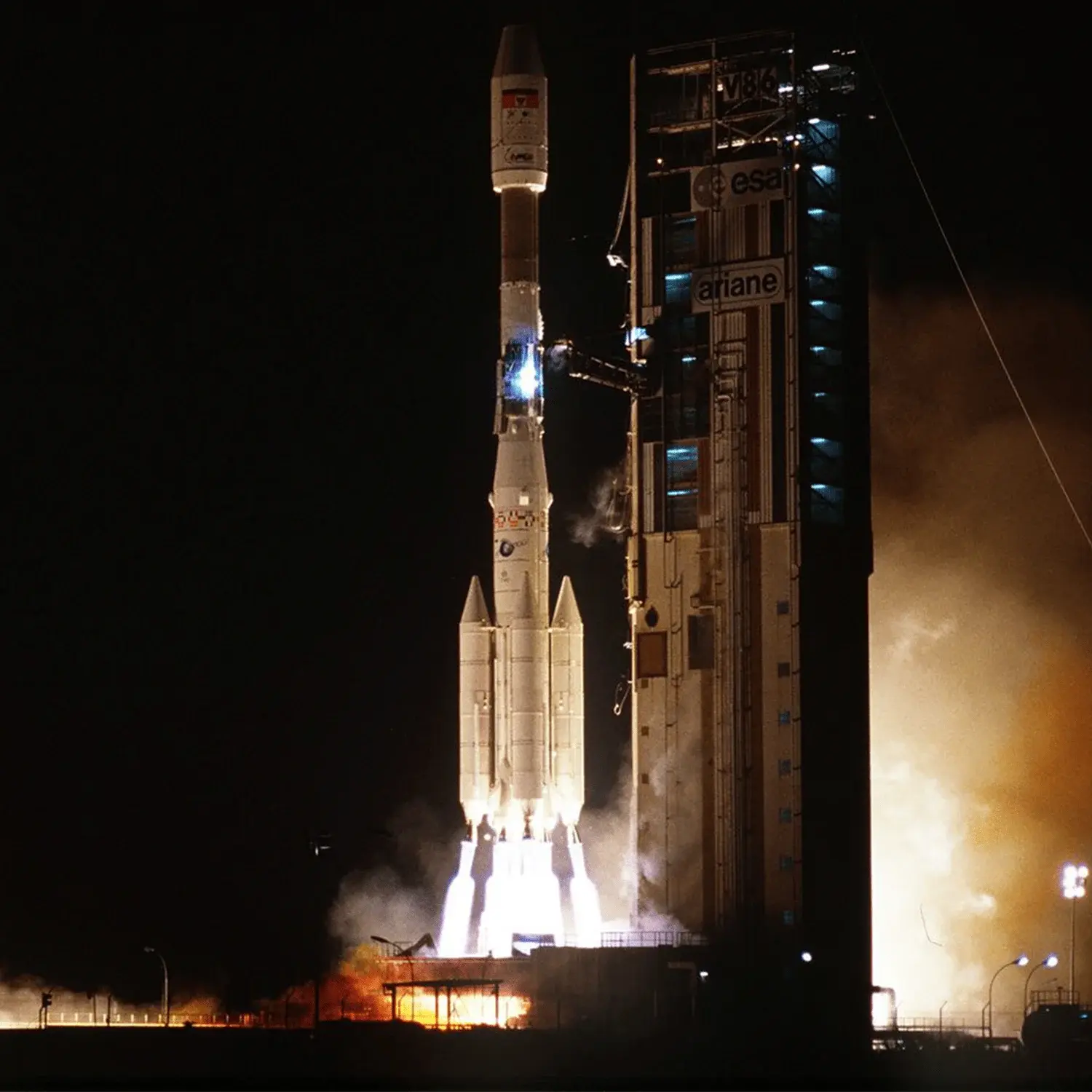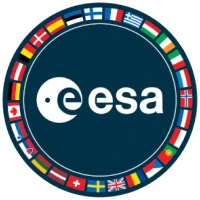Télécom 2C & Insat 2C
Launch Success
Liftoff Time (GMT)
23:23:00
Wednesday December 6, 1995
Mission Details
Launch Notes
Flight V81.
Télécom 2C
The second generation Telecom spacecraft debuted on 16 December 1991 as Telecom 2A and was followed on 15 April 1992 by Telecom 2B. This new series of more capable spacecraft was designed and manufactured jointly by Matra Marconi and Alcatel Espace and is based on the Matra-British Aerospace Eurostar-2000 2.0 m × 2.1 m × 2.0 m satellite bus. On-orbit mass of Telecom 2 is 1380 kg with a payload mass of 400 kg. The twin solar panels span 22 m and provide an excess of 3.6 kW with 2.5 kW available for the payload. The design life is 10.25 years. The Telecom 2 communications package includes ten 6/4 GHz transponders with four spares for telephone and television relays, six 8/7 GHz transponders with three spares for the military Syracuse II payload, and 11 14/12 GHz transponders with four spares for television, data transmission, and teleconference. When completed the Telecom 2 constellation will be deployed at 8 degrees W, 5 degrees W, and 3 degrees E. At the end of 1994 Telecom 2A and 2B were stationed at 8 degrees W and 5 degrees W, respectively. Telecom 2C was launched in 1995 with Telecom 2D followed in 1996.
Geostationary Transfer Orbit
1 Payload
2,283 kilograms
Insat 2C
In March 1994, India selected Arianespace to launch Insats 2C and 2D in 1995 and 1996, respectively. The design lifetime was nine years. The spacecraft are similar to the earlier Insats but are 200 kg heavier at launch (2,100 kg) and carried larger solar arrays for 1.6 kW of electrical power. The communications payload consisted of 12 C-band, 6 extended C-band, 3 Ku-band, and 2 S-band transponders plus a new low-power C-band transponder for a mobile communications feeder. Insat-2C and Insat-2D, in addition to carrying communication transponders in Insat-2A and 2B, incorporated Ku-band transponders for business communication, extended coverage C-band transponders to enable TV programme outreach beyond Indian boundaries catering to the population from South East Asia to the Middle East and transponders for mobile service. They did not have the meteorological payload. Insat-2C and Insat-2B were co-located in the geostationary orbit thus enabling efficient use of allocated orbital slots.
Geostationary Transfer Orbit
1 Payload
2,106 kilograms
Rocket


Manufacturer
ESARocket
Diameter: 3.8m
Height: 58.72m
Payload to Orbit
GTO: 4,720 kg
Liftoff Thrust
6,000 Kilonewtons
Stages
3
Strap-ons
4
Launch Site
Stats
Ariane 4
53rd
Mission
11th
Mission of 1995
European Space Agency
72nd
Mission
11th
Mission of 1995
1995
73rd
Orbital launch attempt